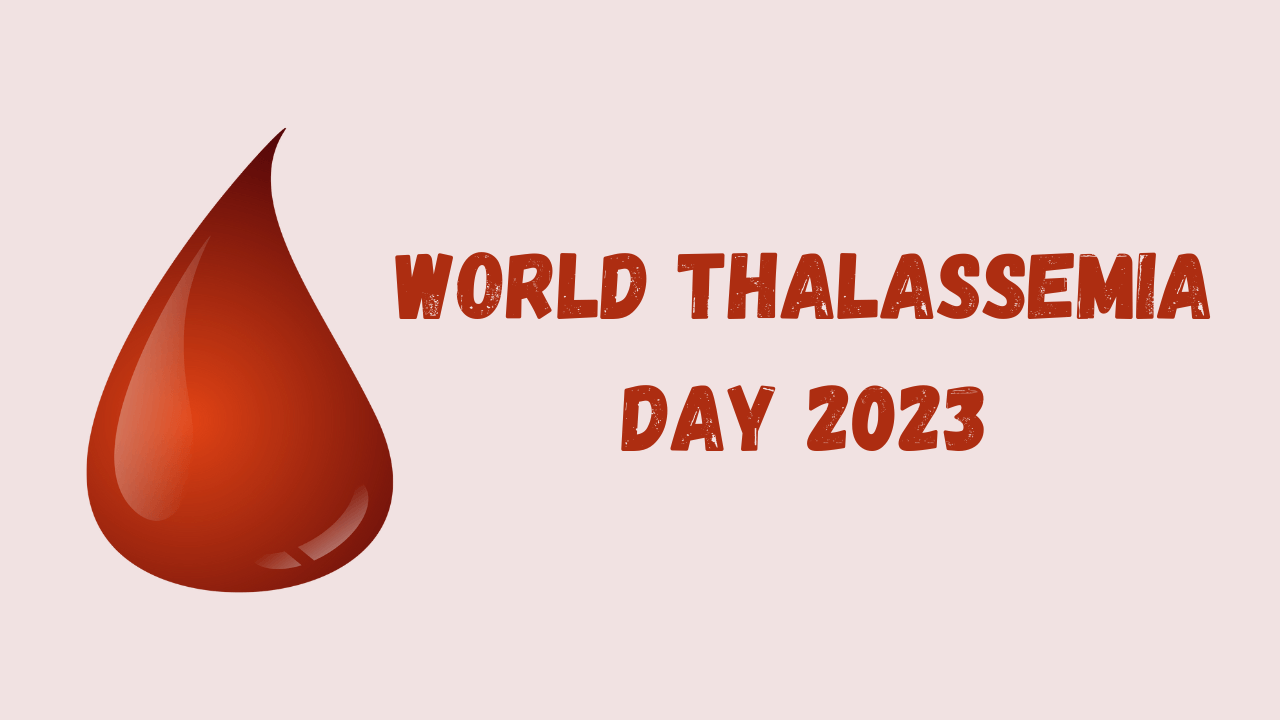World Thalassemia Day, marked on May 8, is a prominent event focused at raising awareness about Thalassemia, a hereditary illness characterized by insufficient production of hemoglobin, a critical protein responsible for oxygen delivery in the bloodstream. This genetic illness causes low quantities of oxygen-carrying proteins in the blood, impacting the health of those who are affected. The primary goal of this day is to increase awareness and understanding of this blood illness while also showing sympathy with individuals who suffer from it.
World Thalassemia Day 2023 – Theme
The theme of the 2023 International Thalassemia Day is “Strengthening Education to Bridge the Thalassemia Care Gap,” which is intended to increase the awareness and knowledge of those affected by Thalassemia. The goal is to eliminate disparities in Thalassemia care by focusing on improving patients’ abilities and knowledge. The primary focus is on empowering people to better manage their illness by increasing their awareness and understanding of the disease.
World Thalassemia Day 2023 – History
The Thalassemia International Federation (TIF), a non-profit organization that represents individuals and families affected by Thalassemia all over the world, created the first World Thalassemia Day in 1994. Thalassemia International Foundation (TIF) was created in 1986 by Thalassemia sufferers, their parents, and Mr Panos Englezos from the United Kingdom, the United States, Greece, Italy, and Cyprus.
The day was created to remember Mr Panos’ son, George, who died of Thalassemia. Since then, May 8th has been designated as World Thalassemia Day to raise awareness about Thalassemia and its impact on individuals and families around the world.
World Thalassemia Day 2023 – Significance
World Thalassemia Day is extremely important in raising awareness of Thalassemia, a genetic blood illness. The day provides an opportunity to educate people about the condition, including its causes and symptoms, as well as to encourage the adoption of healthy lifestyle choices that may help prevent its beginning.
It also plays an important role in drawing attention to the difficulties that people with Thalassemia confront and emphasizes the significance of providing them with proper care and support. Furthermore, World Thalassemia Day acts as a reminder of the importance of continued research and development in the treatment and management of Thalassemia.
More About Thalassemia
- Thalassemia is a blood illness inherited from one’s parents as a result of a genetic mutation. It occurs when the body generates inadequate haemoglobin, a critical protein found in red blood cells.
- Inadequate hemoglobin causes red blood cells to malfunction, resulting in shortened lifespans and a reduction in the amount of healthy red blood cells in the bloodstream.
- Red blood cells are in charge of distributing oxygen to all of the body’s cells, which is necessary for cellular activity.
- When there aren’t enough healthy red blood cells, the body doesn’t get enough oxygen, resulting in weariness, weakness, and shortness of breath, which is known as anemia.
- Individuals suffering from thalassemia may encounter minor or severe symptoms.
- Severe anemia can damage organs and be fatal.
Types Of Thalassemia
The body’s hemoglobin, which is made up of two parts – alpha and beta, carries oxygen to all cells in the body. Thalassemia occurs when the body doesn’t produce enough hemoglobin, which can cause red blood cells to not function properly, resulting in fewer healthy red blood cells in the bloodstream.
The type of thalassemia is determined by which part of hemoglobin isn’t being made – alpha or beta. When either the alpha or beta part is not produced, the body doesn’t have enough building blocks to make normal amounts of hemoglobin, leading to low alpha or beta thalassemia.
The severity of thalassemia can be described as “trait,” “minor,” “intermedia,” or “major.” Thalassemia trait may have no symptoms or only mild anemia, whereas thalassemia major can cause severe symptoms and require regular blood transfusions.
Thalassemia traits are inherited from parents to children, similar to traits for hair color and body structure. The type of thalassemia a person has depends on how many and what type of traits they have inherited from their parents.
Thalassemia can also have other names, such as Constant Spring, Cooley’s Anemia, or hemoglobin Bart hydrops fetalis, which are specific to certain types of thalassemia.
For example, Cooley’s Anemia refers to beta thalassemia major. Having a thalassemia trait may not cause symptoms but can increase the risk of passing the trait to one’s children, potentially increasing their risk of thalassemia.
- 3 August Current Affairs 2023 in English
- MoU Between Subroto Mukerjee Sports and Education Society and All India Football Federation (AIFF) to Promote Football at Grassroot Level
- Dr. Mansukh Mandaviya Delivers Keynote Address at the 13th Indian Organ Donation Day ceremony
- Education Ministry Forms Expert Panel on Anti-Discrimination in Higher Education
- Concerns Arise Over Cheetah Deaths at Kuno National Park
